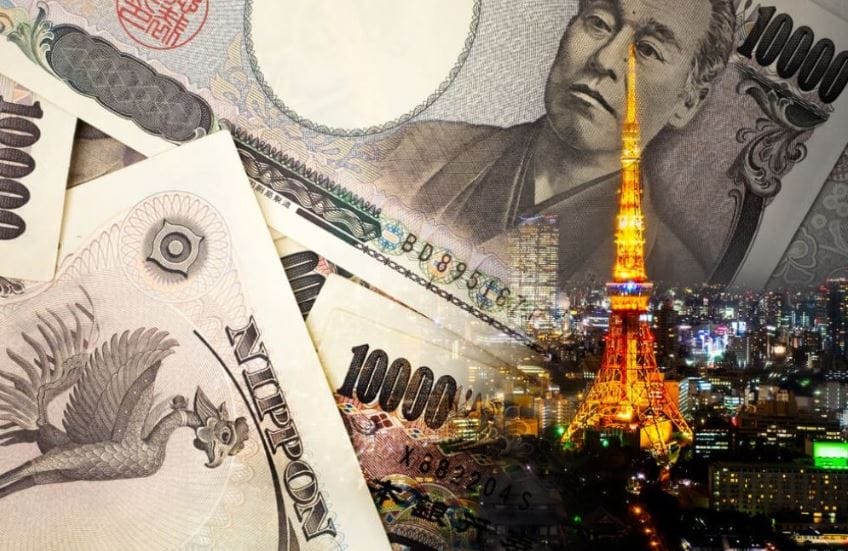Introducing The Japanese Yen
The Japanese Yen is the national currency of Japan, the country of the rising sun. It is the world’s fourth most popular currency in terms of trading volume. It is also Asia’s most extensively used currency. Since 1871, the Japanese Yen has been in use. As a result, it is one of the world’s oldest currencies. Japan relied on Spanish dollars prior to the creation of the JPY.
They didn’t start producing their own money until the Meiji government seized over. JPY currency notes are issued by the Bank of Japan. It’s also worth mentioning that the yen is one of the least expensive currencies in the region. In order to compete with foreign exporters, the Japanese government has tried to maintain these low rates by keeping its own export rates low. However, due to Japan’s economy’s rapid growth in value, this is becoming increasingly difficult.
Why Trade The JPY Index
Indexes are some of the most popular assets to trade in this industry. But, the JPY index is one of the best indexes due to the following reasons:
Market Liquidity
The Japanese market is one of the most liquid markets in the industry. The daily trading volumes for this popular asset signifies just how popular it is among traders worldwide. It is due to these extremely high trading volumes that the JPY Index experiences some of the lowest spreads and highest liquidity. Explaining this further, a high daily trading volume means that there are a lot of people trading the dollar on a daily basis. And because a lot of people are trading dollars on a daily basis, it is much easier to trade this asset as there are a lot of people ready to buy it. Markets in such conditions are considered liquid. A high liquidity asset is usually preferred among traders as you have a better chance of earning profit due to constant movement and trades in the market.
Safe Haven Asset
One of the many ways a trader first gets into trading this valuable asset is by using it as a safe haven asset. What this means is they usually shift to trading the JPY when other currencies are facing volatile market conditions. Oftentimes in a year, certain events cause most forex pairs to become volatile. This makes it very risky and close to impossible to earn profit while trading in those market conditions. Due to this reason, traders usually shift to the JPY Index as it often experiences great upward trends while others are in turmoil. The JPY is often found at some of the highest market values when other currency pairs are struggling to stay afloat. Due to these reasons, it is known as a safe haven asset.
Market Predictability
It is much easier to predict the market direction of indexes like the JPY Index. This is because they are usually only impacted by any instability in their individual regions. The JPY Index would mainly only be impacted by anything out of the ordinary that occurs in Japan. This would’ve been much harder to predict if it was the JPY index as the JPY is impacted by pretty much any major event around the world. This can prove to be quite stressful as it is nearly impossible to keep a lookout for any economic changes happening everywhere around the world. Therefore, it is much easier to predict the market direction of indexes like the JPY Index as they like to keep to themselves instead of bothering with the rest of the world like the USD.
JPY Index Trading Tips
Since the JPY index is not a popular index to trade, there aren’t that many strategies out there to help you trade this index. Here are some trading tips for the JPY index:
Trend Trading
Trend trading is the use of market movement patterns to determine when to place an order. Trends are easily noticeable, especially when looking over longer durations. The most typical patterns to watch for are when the market moves steadily higher or even downwards. An upward trend may be observed when the highs are rising and the lows are rising as well. Similarly, a downward trend may be observed when the highs are falling and the lows are falling as well. As a result, you may spot trend patterns in the JPY Index and hence do trend trading in this manner.
Pullback Trading
Pullback trading occurs when the market temporarily deviates from its trend, allowing you to enter the market at a low cost. When trading a pullback, you must first determine when the market will pull back. If the JPY Index is in an uptrend and momentarily breaks and falls a little, you have a chance to join the market at a reasonable price with a BUY transaction. Similarly, if the market is in a downtrend and temporarily breaks and climbs significantly, you have an opportunity to enter the market via a SELL trade at a decent price. As a result, this is a basic yet successful approach for the JPY Index.
Range Trading
Range trading is the practice of determining when to initiate a trade by using support and resistance levels. The resistance levels are represented by the highest points on a given chart. Similarly, the lowest points on a specific chart are the support levels. Understanding where these highs and lows are located is crucial to the range trading strategy. For instance, if the price is approaching a resistance level and you believe it will hold, you may make a SELL transaction. If, on the other hand, the price is reaching a level of support that you believe will hold, you may execute a BUY transaction. If the price falls below support, you can start a short position because the support level will no longer be legitimate. Similarly, if the price continues to rise over the resistance level, you may go long since the resistance level will be invalidated.
Factors Affecting The JPY Index
You should know that the JPY index is not an easy asset to trade. There are several factors affecting this index. They are as follows:
Supply & Demand
Demand for the Japanese Yen is created whenever Japan sells goods or services to clients located in other countries because those consumers must pay for the sold goods and services using dollars. As a result, in order to complete the payment, they will need to transform their native currency into JPY by selling their own currency and purchasing them with USD. In addition, payments for bonds issued by the Japanese government or by large Japanese corporations to raise capital that is subsequently purchased by foreign investors will be required to be made in dollars. These bonds are issued by the Japanese government or by large Japanese corporations. This also applies to the acquisition of Japanese business equities by non-Japanese investors, who are required to sell their currency in order to obtain JPY in order to be able to purchase the stocks.
Inflation & Deflation
Inflation and deflation play a massive role in determining the market value of the JPY Index as well. When inflation occurs, currencies such as the JPY lose their value and therefore their market rates start to drop. This causes the JPY Index to drop in value as well. Similarly, if there was no inflation, the Japanese economy would be thriving and the JPY Index would be in bullish market conditions.
Gross Domestic Product
The Gross Domestic Product, or GDP, shows the overall performance of a country’s economy. It is a major contributing factor to the movement of the JPY Index. A positive GDP value would signify that the economy is thriving. This would in turn attract investors to invest in the country’s economy which would therefore increase the value of that country’s currency. If Japan has a positive GDP, the Japanese Yen would increase in value which would cause JPY Index to also increase in value. The opposite can be seen if Japan had a negative GDP. This would mean that the Japanese economy is suffering which would, in turn, cause the JPY index to fall in value.
Market Sentiment
Japan is confronted with the possibility of a sell-off in the event that the economy of Japan weakens and consumption slows due to increasing unemployment, for example. In this scenario, Japan is faced with the possibility of a sell-off, which could take the form of returning the cash obtained from the sale of bonds or stocks in order to return to their local currency. The value of the JPY is weakened as a result of the activity of foreign investors who repurchase their country’s currency.
Interest Rate Decision
Interest rate decisions are a major contributing factor toward the movement of the JPY Index in the forex markets. Any rise in interest rates for the JPY will have an inversely proportional impact on the JPY Index. A great example can be seen when the BOJ decide on increasing its short-term interest rates. This had caused the JPY Index to decrease in value. Similarly, if they would’ve decreased their interest rates, the JPY Index would increase in value instead.
Unemployment Rate
Unemployment is a huge contributing factor to a country’s economy. If a person is unemployed, it is a burden on the government’s end to provide basic necessities for them for survival. Therefore the more the number of unemployed people, the more burden it is on the government to use their reserves to provide for the unemployed people. The higher the unemployment rate in Japan, the poorer will be its economy. This in turn would cause JPY Index to depreciate in value. Similarly, if the unemployment rate is low, the economy would be thriving and the value of the JPY Index would also appreciate.
Natural Disasters
The earthquake emergency in Japan has had a big influence on the JPY index’s movement. Earthquakes and other natural disasters are very dangerous in Japan. This is because Japan experiences them more often than any other country. This is related to their physical location on Earth. As a result, Japan has had to improvise and design its country and infrastructure in a way to make it resist the pressure and damage that usually comes with earthquakes. This is because, when there is an earthquake, their economy suffers as a result of several areas that need to be repaired or rebuilt. They incur losses in the millions of dollars every time there is an earthquake. As a result, if the Japan Meteorological Agency detects an earthquake, the JPY depreciates, leading the JPY index to also depreciate. Similarly, if the agency states that there will be no earthquakes in the near future, the value of JPY increases, leading the value of the JPY index to also increase.
Crude Oil Industry
Over time, Japan has developed to become the world’s third-largest supplier of crude oil and natural gas. Their economy is heavily reliant on global demand for these items. Any changes in crude oil demand will have an influence on Japan’s economic value. If global demand for crude oil rises, Japan will export it more frequently, causing the JPY to appreciate in value. This would result in an increase in the value of the JPY index. Similarly, if demand for crude oil is lower than normal, Japan will be unable to export as much, causing the JPY to decline in value. As a result, the JPY index depreciated
Technology Industry
Japan is one of the world’s biggest technology exporters. They are also the leading producer in the sector. As a result, any shift in demand for technology products will have an immediate impact on the Japanese economy and, by extension, the JPY index. If worldwide demand for technology increases, Japan will export more than usual, leading the JPY to rise in value. As a result, the JPY index would appreciate as well. Similarly, if demand for technological products falls, the JPY falls in value, leading the JPY index to also fall in value. As a result, keeping an eye on this area is essential for an effective day of the JPY index trading.




